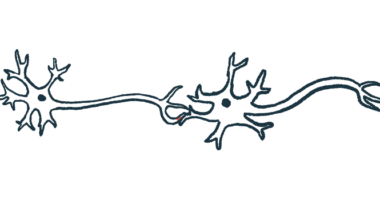In ALS, motor neurons’ molecule misplacement is widespread: Study
Hundreds of proteins, mRNAs affected in patient nerve cells

It’s long been known that some molecules are misplaced in the nerve cells that progressively die in amyotrophic lateral sclerosis (ALS), but a new study shows this affects hundreds of different molecules, not just a handful, as previously thought.
“This research represents a shift in our thinking about what causes ALS – it doesn’t involve abnormal movement of just a few proteins, but the abnormal localization of hundreds of proteins and mRNAs [messenger RNAs],” Rickie Patani, MD, PhD, the study’s senior author at the Francis Crick Institute, in London, U.K., said in an institute press release. “This opens new avenues for research and potential therapies.” mRNA is an intermediary molecule derived from DNA that guides protein production.
The researchers also found the experimental therapy ML240, which blocks the activity of the ALS-linked enzyme VCP, could partially block the misplacement of cellular contents in patient-derived nerve cells.
“As ML240 improved the mislocalization and other disease features in ALS, we now need to understand if this can be a tractable therapy for ALS more widely. This is just the beginning and there is lots more to do, but our work provides some hope for effective therapies,” Patani said.
The study may be an important first step, but the researchers emphasized more work is needed before the therapy can be given to people. It hasn’t yet been tested in animals, a crucial step for assessing the safety of investigational treatments.
The study, “Nucleocytoplasmic mRNA redistribution accompanies RNA binding protein mislocalization in ALS motor neurons and is restored by VCP ATPase inhibition,” was published in Neuron.
Role of incorrect placement in motor neurons in ALS
ALS symptoms are driven by the death and dysfunction of motor neurons, the specialized nerve cells that control voluntary movement. While the causes of their dysfunction are incompletely understood, incorrect placement of proteins and mRNA has long been thought to be involved.
Previous research has suggested that certain proteins normally found in the nucleus (the central cellular compartment that houses all genetic information) are instead found outside of it in ALS patients’ cells.
One such protein is TDP-43, which helps regulate RNA processing and forms toxic clumps outside the nucleus — a hallmark of the disease. While TDP-43 mislocalization has been extensively documented, it was assumed that ALS-associated mislocalization mainly impacted just a few key molecules.
In this study, the scientists performed wide-scale assessments of mRNA and protein localization in motor neurons from healthy people and ALS patients with mutations in either the TARDBP or VCP genes. TARDBP encodes for TDP-43, while VCP encodes an enzyme of the same name that’s involved in protein breakdown.
The researchers found that hundreds of mRNA molecules and proteins were abnormally distributed in patients’ cells. Molecules usually found in the nucleus were outside it, while molecules normally found outside the nucleus were inside.
The findings supported the presence of transport issues in the cells of people with ALS.
There were some differences in the specific molecules that were incorrectly located between cells carrying different ALS-associated mutations. There was still a lot of overlap, however, and several of the shared misplaced molecules have been implicated in developing ALS.
Across mutations, about two-thirds of the misplaced proteins moved from inside the nucleus to outside it. Analyses of cells from deceased patients showed similar findings.
“These findings indicate that ALS mutations induce notable changes in [the distribution of molecules inside and outside the nucleus], which is remarkably consistent across mutations,” the researchers wrote.
“We were surprised to see the extent of the mislocalization, particularly for mRNAs, as this hasn’t been reported before,” said Oliver Ziff, MD, PhD, one of the study’s co-first authors at the Crick.
Many of the mRNAs and proteins were able to physically stick to each other. The researchers speculated this could help explain why so many molecules become misplaced, since one moving molecule might drag along others that are attached to it.
“These data support the concept that interactions between mRNA and proteins contribute to widespread [inside and outside the nucleus] redistribution and mislocalization in ALS motor neurons,” the scientists wrote.
ML240 helps restore molecular localization
The researchers also showed that ML240, a VCP-blocking investigational therapy, restored the localization of more than 95% of these molecules in patients’ motor neurons, regardless of the mutated gene.
ML240 was found to change how the VCP protein interacts with other proteins that help control the movement of molecules into and out of the nucleus. This effect was seen only in cells with VCP mutations, not with TARDBP mutations.
Nonetheless, in motor neurons with either mutation, blocking the VCP protein with ML240 led to reductions in DNA damage and other signs of ALS-associated cellular damage.
While these findings are promising, the researchers emphasized the study was limited to cell models and only in those caused by a few ALS-associated mutations.
“Future research should aim to validate these findings in different ALS genetic backgrounds and models,” they wrote, noting more studies into the underlying cause of improper molecule placement in ALS cells are needed.
“The goal now is to find where this problem starts and there are many intriguing possibilities, one being a breakdown in the transport between the nucleus and [outside the nucleus],” Ziff said.







